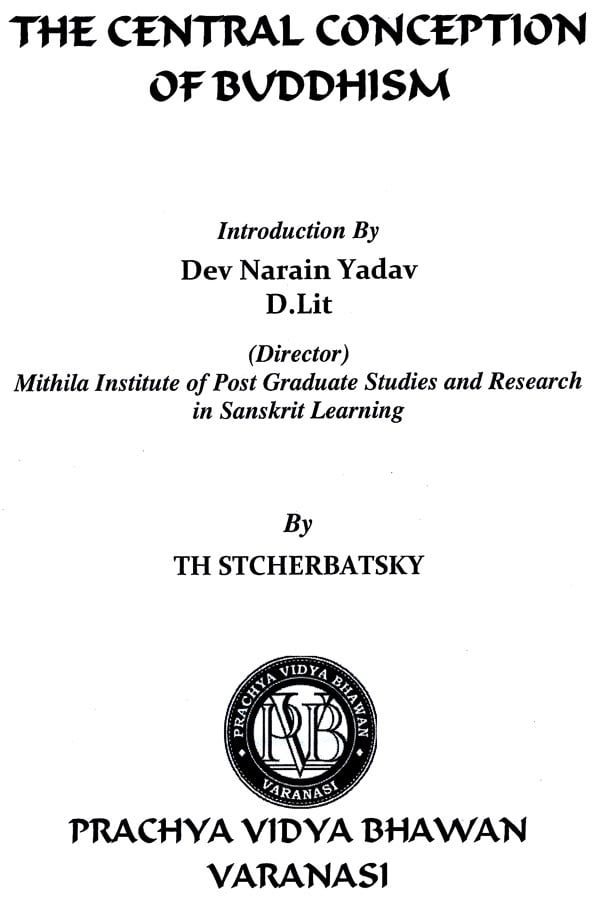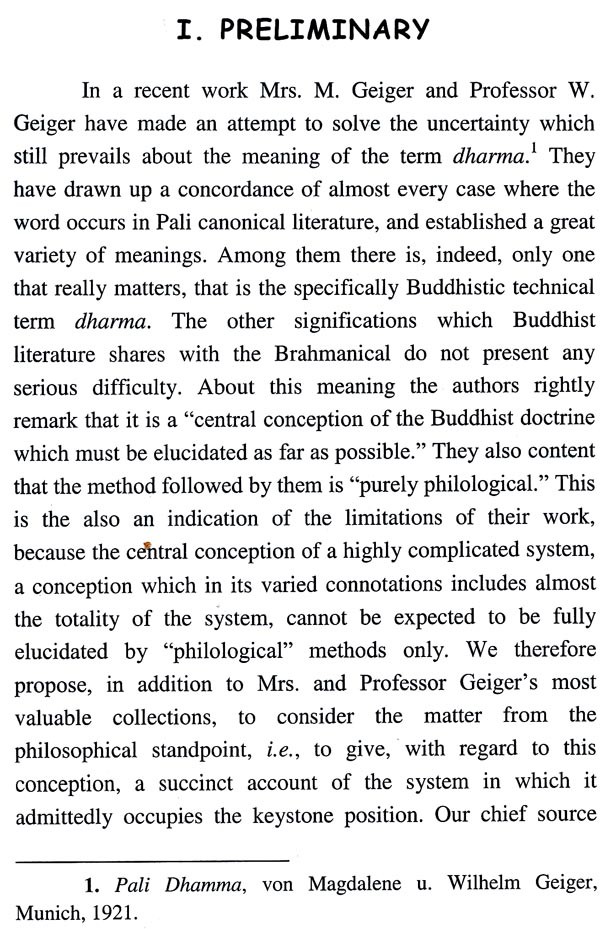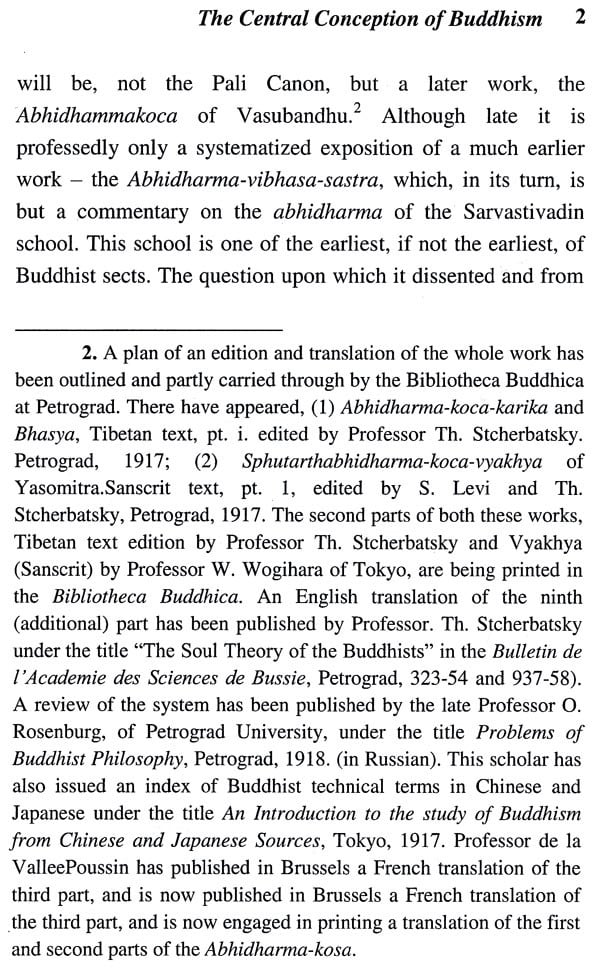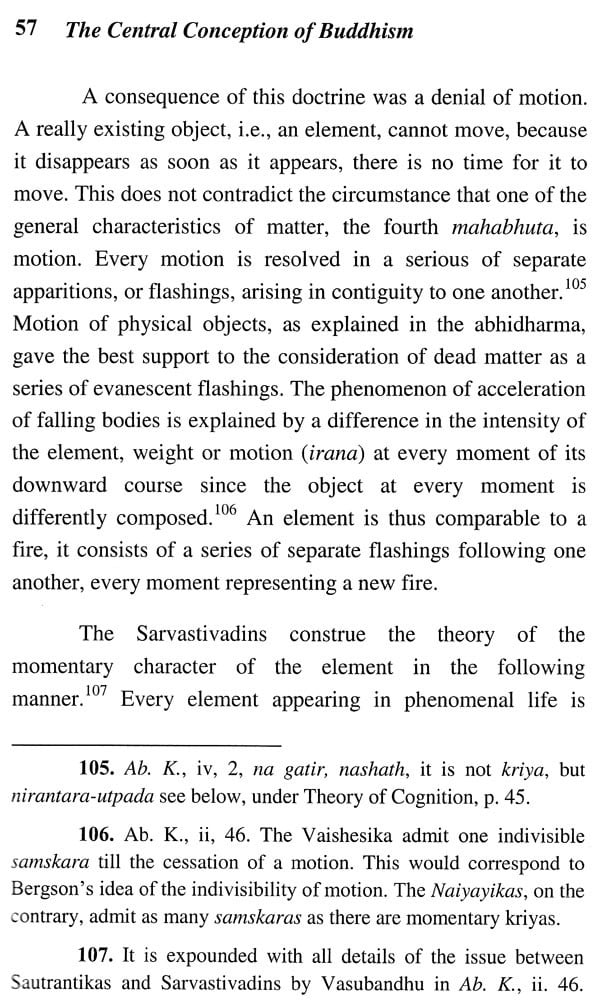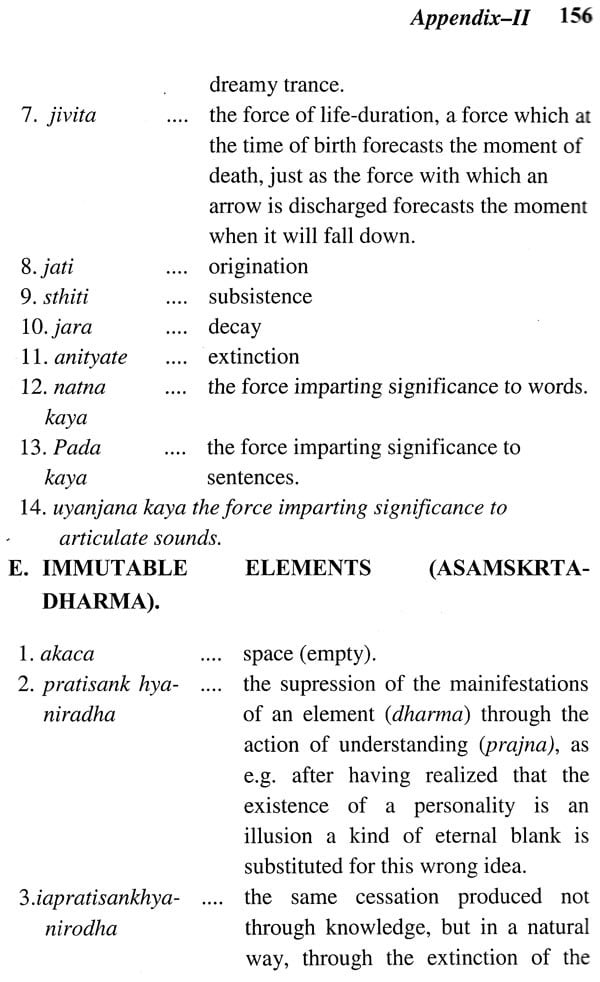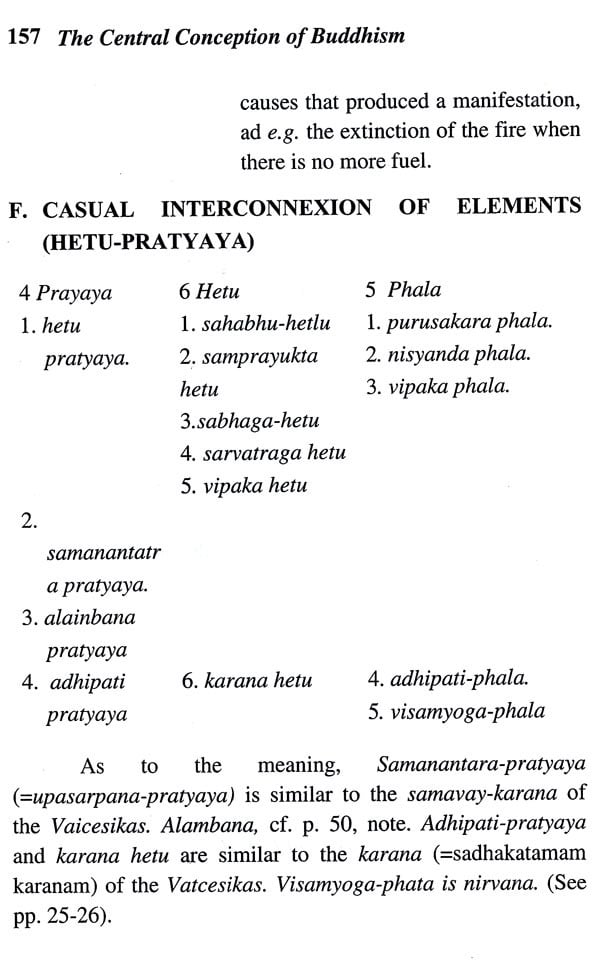About the Book The conception of a dharma is the central point of the Buddhist doctrine. In the light of this conception Buddhism discloses itself as a metaphysical theory developed out of one fundamental principle, viz. the idea that existence is an interplay of a plurality of subtle, ultimate, not further analyzable elements of Matter, Mind, and Forces. These elements are technically called dharmas, a meaning which this word has in this system alone. Buddhism, accordingly, can be characterized as a system of Radical Pluralism (sanghata-vada): the elements alone are realities, every combination of them is a mere name covering a plurality of separate elements. The moral teaching of a path towards Final Deliverance is not something additional or extraneous to this ontological doctrine, it is most intimately connected with it and, in fact, identical with it.
But, although the conception of an element of existence has given rise to an imposing superstructure in the shape of a consistent system of philosophy, its inmost nature remains a riddle. What is dharma? It is inconceivable! It is subtle! No one will ever be able to tell what its real nature (dharma-svabhava) is! It is transcendental!
Introduction In a recent work Mrs. M. Geiger and Professor W. Geiger have made an attempt to solve the uncertainty which still prevails about the meaning of the term dharma. They have drawn up a concordance of almost every case where the word occurs in Pali canonical literature, and established a great variety of meanings. Among them there is, indeed, only one that really matters, that is the specifically Buddhistic technical term dharma. The other significations which Buddhist literature shares with the Brahmanical do not present any serious difficulty. About this meaning the authors rightly remark that it is a "central conception of the Buddhist doctrine which must be elucidated as far as possible." They also content that the method followed by them is "purely philological." This is the also an indication of the limitations of their work, because the central conception of a highly complicated system, a conception which in its varied connotations includes almost the totality of the system, cannot be expected to be fully elucidated by "philological" methods only. We therefore propose, in addition to Mrs. and Professor Geiger's most valuable collections, to consider the matter from the philosophical standpoint, i.e., to give, with regard to this conception, a succinct account of the system in which it admittedly occupies the keystone position.
**Contents and Sample Pages**
